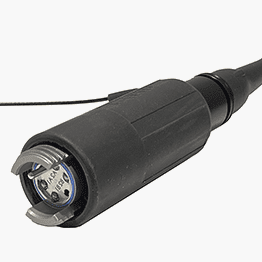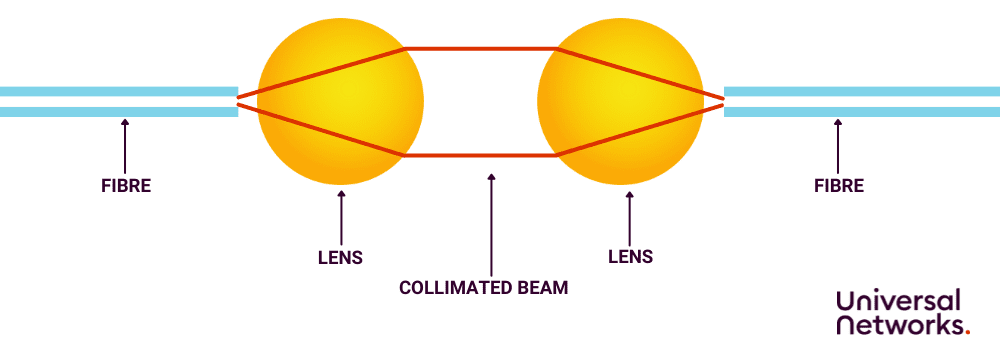What are the features of Expanded Beam Connectors?
Some of the key features of expanded beam connectors include:
- Lens or prism system: Expanded beam connectors use a lens or prism system to expand the optical signal into a wider beam of light, which is then transmitted through the connector. This design helps to reduce the sensitivity of the optical link to physical misalignment or contamination.
- Ruggedness: Expanded beam connectors are designed to withstand harsh environmental conditions, including dirt, dust, moisture, and other contaminants. They are often used in military, aerospace, and industrial applications where reliable performance is critical.
- Resistance to physical misalignment: Expanded beam connectors are less sensitive to physical misalignment than traditional fibre optic connectors. This reduces the risk of damage to the connector or the fibre.
- Low optical loss: Expanded beam connectors typically exhibit low optical loss and high return loss, which can improve signal quality and reduce the need for signal amplification.
- Flexibility: Expanded beam connectors can be used with a variety of different fibre types and can be easily adapted to different connector styles or interfaces. This makes them a versatile option for a wide range of applications.
- Easy maintenance: Due to their resistance to contamination and physical misalignment, expanded beam connectors require less maintenance than traditional fibre optic connectors. This can improve system uptime and reduce maintenance costs.
Overall, expanded beam connectors offer a reliable, high-performance, and flexible solution for demanding optical connectivity applications.
With key features including ruggedness, reliability, and resistance to physical misalignment and contamination, Expanded Beam connectors are well-suited for use in demanding and harsh environments where reliable optical connectivity is critical.









